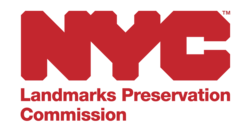In New York City, a Landmark Violation is issued when work is performed on a landmarked property or within a designated historic district without the required approvals from the Landmarks Preservation Commission (LPC), or when work deviates from what LPC permitted.
Tip: Landmark rules apply to exterior features visible from a public way and, in many cases, specified interior features.
Common Triggers
Without LPC Approval
- Replacing windows/doors with non-matching styles
- Cleaning or re-pointing façades with improper methods/materials
- Installing signage, lighting, or awnings
- Roof work visible from the street (e.g., railings, bulkheads)
- Removing original architectural elements
Against Permit Conditions
- Using materials that differ from the approved set
- Expanding the scope beyond what LPC authorized
- Not following approved details, colors, or profiles
- Starting work before the permit is issued
Penalties & Project Impact
Violations can lead to fines, stop-work orders, and costly rework. They frequently delay DOB permits, appraisals, and closings until compliance is documented.
How to Check If You Have One
- Review prior LPC permits and approvals tied to your address.
- Search relevant city portals and request records from LPC.
- Conduct a site walk-through to compare existing conditions with historic documentation.
Step-by-Step Resolution
- Stop unapproved work. Stabilize the site to prevent further issues.
- Document conditions. Photos, historic images, and measured drawings.
- Prepare filings. Apply for the correct LPC authorization (e.g., Certificate of No Effect, Permit for Minor Work).
- Perform corrective work. Use approved materials and methods only.
- Close out. Request LPC confirmation/Notice of Compliance and align DOB records.
How We Help
NYC Building Violation Removal & Expediting LLC guides owners, architects, and contractors through compliance, from initial assessment to final sign-off:
- LPC code review and compliance strategy
- Preparation and filing of LPC applications and supporting materials
- Owner/architect/contractor coordination and representation
- Corrective scope planning aligned with historic materials and profiles
- Close-out assistance and documentation
